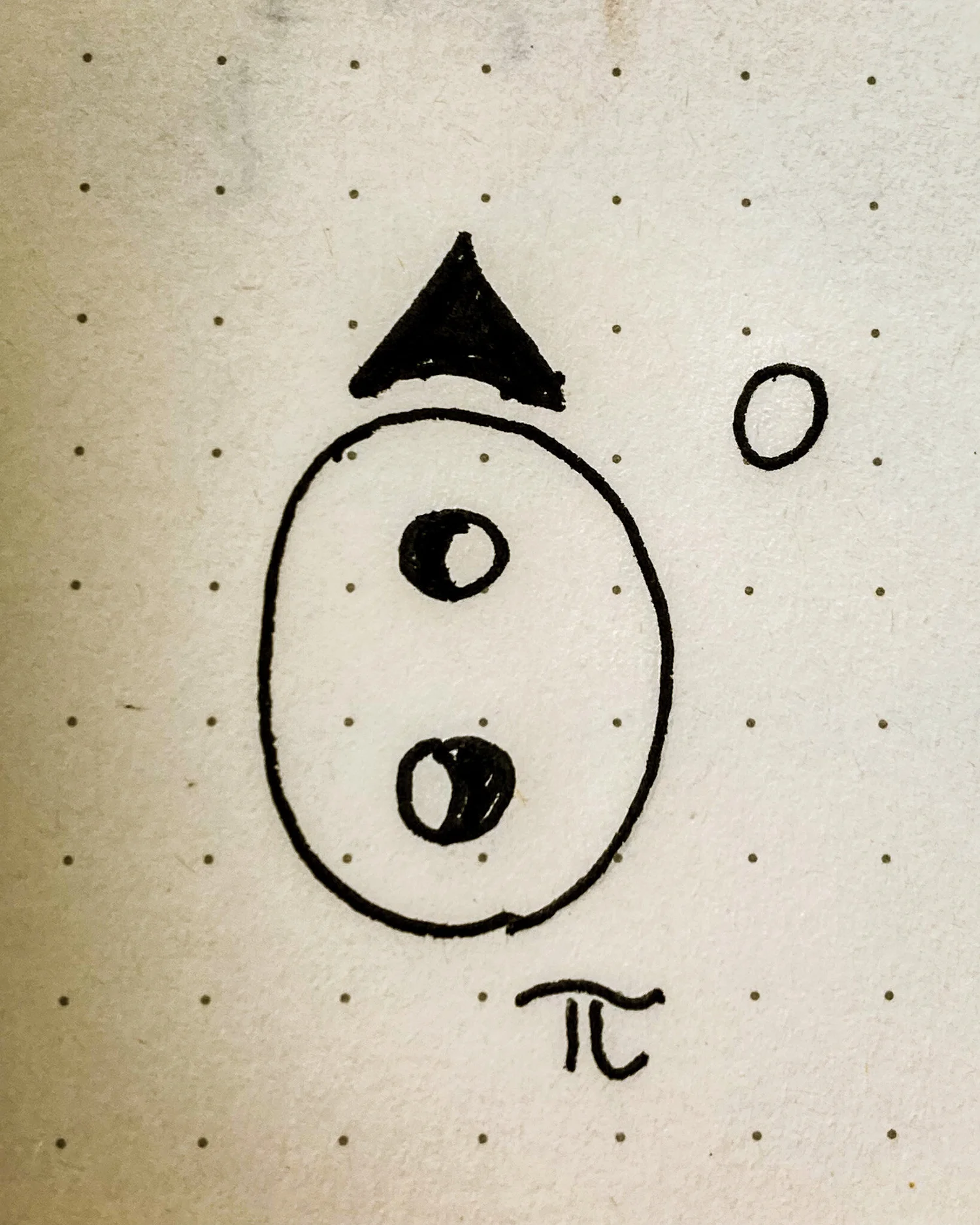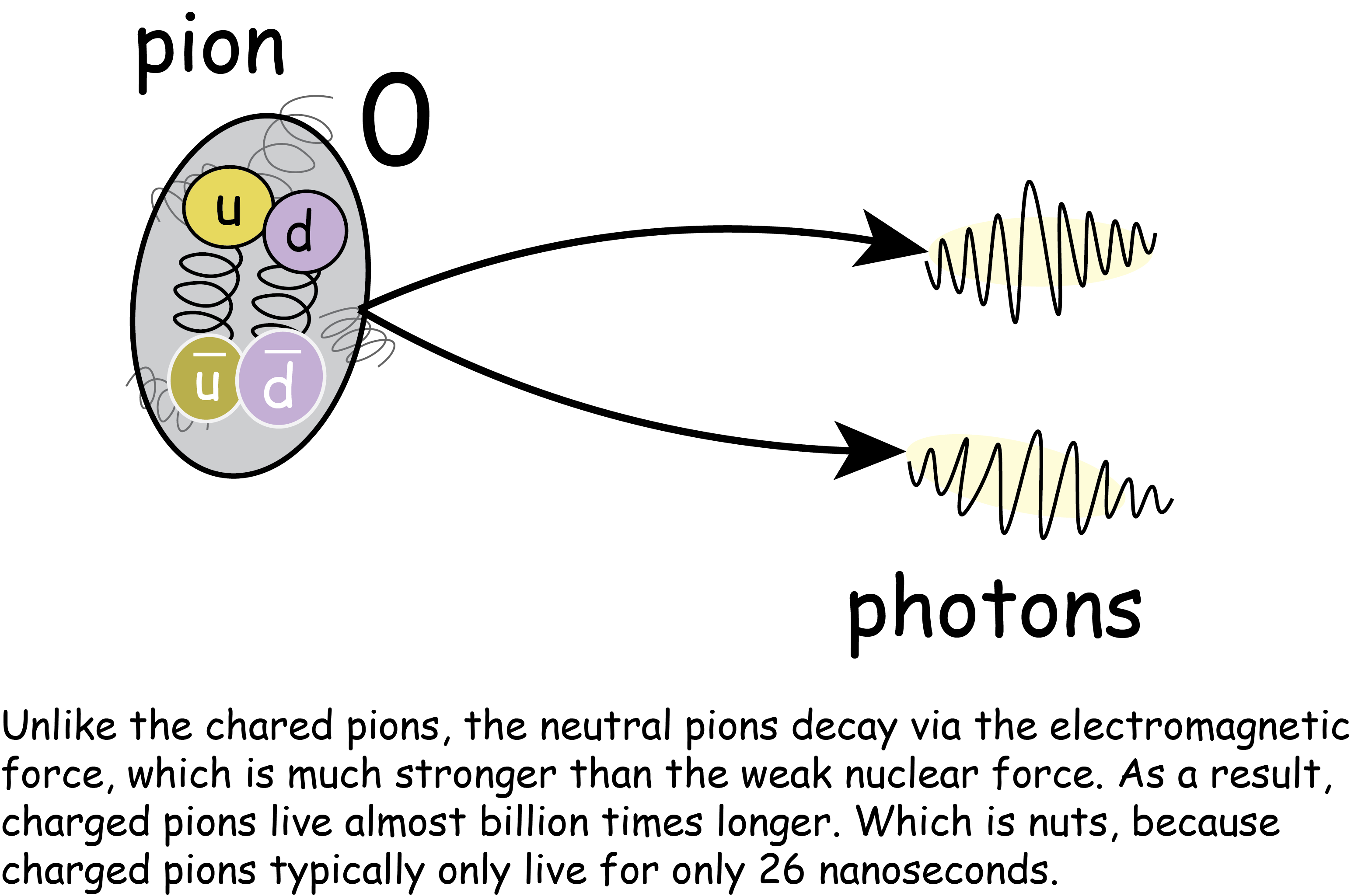
The Neutral Pion
In many ways, the neutral pion - sometimes call the π0 meson - is closely related to the charged pions. In others, the neutral pion is a truly bizarre little beast.There are so many kinds of pions because there are so many ways to combine up and down quarks into particle/antiparticle pairs. The neutral pions are kind of a mixed bag of up quarks paired with antiup quarks, and down quarks paired with antidown quarks. The electric charges are always canceled between these antiparticle partners. The neutral pion is a great example of how antimatter isn’t always a destructive thing.
Owing to this special structure, the neutral pion is its own antiparticle.
π0 mesons decay much, much faster than their charged siblings, a literal billion times faster. They only stick around for about 8.5×10−17 s. Yikes! That’s so small it probably doesn’t mean anything to most of us! By particle standards, it’s a properly fast decay.
Figure: Neutral Pions

The neutral pion is very different from its charged colleagues. In particular, it decays to photons.
The charged pions decay via the weak nuclear force. The neutral pions decay via the electromagnetic force, which is much, much stronger. Which is why they decay much faster. However uninspiring their short lifetimes might be, how these particle decay is truly fascinating.
Neutral pions decay into a pair of photons almost all the time. When they don’t, its because one or more of those photons converted implicitly to an electron/positron pair. This decay happens because of the so-called chiral anomaly, which is an extremely subtle feature of the laws of our universe.
The chiral anomaly emerges as an event - a blip or moment in time - where the quarks that make up the neutral pion quantum mechanically convert into all kinds of quarks - up down strange top bottom whatever - all at once. It’s kind of reminiscent of the nuclear goo that’s inside a pion or a proton. That goo collectively and cleanly self annihilates into a pair of photons - and it does so with remarkably efficiency.
This is a purely quantum phenomenon - microscopic correction at that - which has a lot of real world consequences. The chiral anomaly depends on all the quarks all at once, even ones that might be so heavy we haven’t seen yet. As it turns out, to correctly compute the measured pion lifetime, the total number of quark species must be six. Precisely six.
As it also turns out, we've already observed six different kinds of quarks which, on the one hand, is a bummer. On the other, in an amazing consistency check on the known laws of physics. It's how we know our understanding of nature is on the right track.
Because these neutral pions decay to photons of a very specific energy, they are very easy to look for. Astronomers will routinely see them while looking into space! π0 decays are often associated with supernovae - that is, exploding stars - which suggests two things. First, exploding stars explode with such power that they act as gargantuan particle accelerators. Second, having giant, cosmic particle accelerators explains the large number of ultra high energy cosmic rays that are responsible for the cosmogenic muons raining down upon all the time.